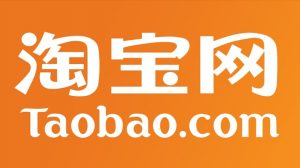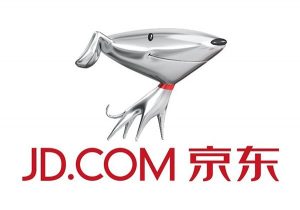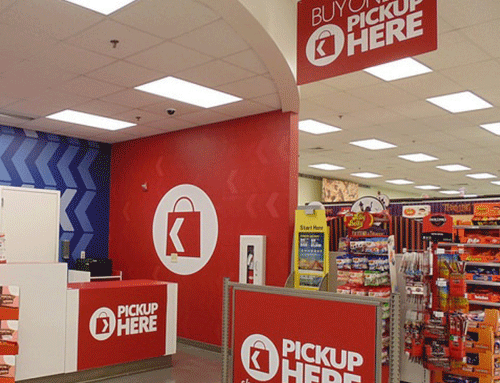The
COVID-19 pandemic has created panic all across the globe. As per WHO (World Health Organisation), almost every country in the world has reported
COVID-19 cases. The disease is believed to have originated from China and does not have a cure in the present. Self-quarantine and social distancing are the only ways of avoiding this dreaded disease. This has led to people staying indoors resulting inseveral changes – including in retail, commerce and e-commerce.
The
COVID-19 pandemic has shifted the focus from direct commerce to electronic commerce or e-commerce.There has been a sudden surge in online buying, accelerating e-commerce, and this trend is likely to stay on for the future.
The digital age had introduced e-commerce to the consumers and the present pandemic situation seems to have increased its practice.
The success of e-commerce during past epidemic situations.
The growth and success of e-commerce during pandemic like conditions was seen during the SARS epidemic in 2002-2003. Several companies then shifted their business models to online mode and recorded huge success rates.
Here are a few examples:

Alibaba:
The newly formed B2B portal during the SARS epidemic concentrated on growing its customer base during the 2002-03 period. As a result, the portal registered 4000 new customers and 9000 new products every day.
They recorded a growth of 5 times than the projected growth during the endemic period.d.

TaoBao:
A C2C sales platform was conceptualized two years ahead of the SARS endemic and was used to counter eBay in China. With a few years of its launch in May 2003, it became the number one website for the C2C business model ousting eBay. In 2019, TaoBao had a GMV of $434 billion.

JD.com:
Previously, the owner of JD.com, a now popular online store had a chain of retail stores. The SARS epidemic forced him to shift the business to online mode. It was the right move which has resulted in a $38 billion company.
The present-day shift to e-commerce.
Taking cues from history, several sectors have already started shifting towards online retail and are in the process of building customers. Here are a few such examples:
Online learning:
Several online learning portals have increased their marketing and sales activities to attract customers in the lock-down period. They are offering free or discounted courses to build up their client base.
These platforms are actively working towards providing learning resources and are bridging the gap between trainers and learners.
The customers have also responded positively towards utilizing free time in hand.
Health sector:
Due to the lock-down situation, the health sector has also taken the online mode.
Consultation, medicine delivery, and health and fitness solutions have been put online to provide an alternate healthcare route.
This sector has also brought in a positive response from the customers.
Financial sector:
There has been a surge in contact less financial transactions triggered by the present pandemic state. Online transactions for any purpose have taken precedence over cash transactions.
All commercial institutions have increased their marketing activities towards this cause and have received an overwhelming response.
Online entertainment and gaming:
Online entertainment channels have seen an increase in subscriptions.
Few entertainment channels are even providing free service in order to wean out the competition.
Various e-gaming platforms have seen a rise in customers and are providing various discounted payment options.
How to change over to online mode.
In the present scenario, a quick shift from offline mode to online selling is required for business survival.
Accenture, in one of its articles, suggests the following steps:
- Identify the major problems and supply chain gaps and assign key individuals towards each such issue. These individuals are to be responsible for solving the pain points.
- Prioritize and group the issues, analyze the new customer demand patterns and re-evaluate & re-plan the supply chain.
- Based on the inputs and restructuring, make a pilot plan, and deploy product teams. Ensure that the pilot plan has minimum features to reduce stress on it.
- As per the inputs from the deployed pilot plan, optimize the existing pilot plan to have a newer and improved version of it. Have several iterations if required.
- Use the successful pilot plan to launch other products and services by scaling it and adding features if required.
These steps, though generic in nature is adaptable for any type of business and can help it to change over to online mode.
For the existing e-commerce businesses.
There are several online retailers which are unable to capitalize on the present opportunity. It is possible that they have not adapted to the present-day extraordinary conditions.
ROI Revolution, a digital marketing, e-commerce agency has the following leads.
1. Take stock of the products in your selling list.
If required, modify it as per the present-day market requirements.
The demand for certain products has suddenly increased while several other products are getting lesser customers.
2. Check your online presence.
Revisit your product description web-pages and tweak your keyword strategy.
Improve or rewrite these pages if necessary.
3. Improve and innovate your branding activities.
It is necessary to be in front of your customers.
Stay connected with your customers. Messenger based advertisement, email marketing are few such options.
4. Shift your marketing activities to where your customers are.
Facebook, Netflix, Television are few such channels.
To conclude:
COVID-19 has accelerated E-commerce activities. It is believed that this shift towards online retail activities will remain for the coming future.
“POSibolt, our one-stop ERP solution is there to support your transition from offline to online mode. It is E-commerce ready and has several other features to ease your business activities”.
POSibolt is useful for E-commerce, customer engagement, managing point of sale settlements, inventory control & business accounting, and even manages HR & payroll of employees.
POSibolt is cloud enables, meaning it can be accessed from the comforts of your home. You can engage with your customers through it and gain actionable analytics towards making informed decisions.
Its e-commerce feature enables you to sell your products online – a required facility in the present COVID-19 pandemic situation.
It is easy to integrate and allows you to sell on multiple platforms, helps you manage your inventory, and strengthen your brand.
Ready to scale your retail? Our team of POSibolt consultants are on hand to help you grow your business. Click on the link to request a callback:
https://posibolt.co.za/contact/ or visit us at
https://posibolt.co.za/za/








